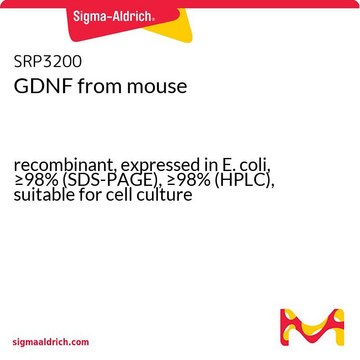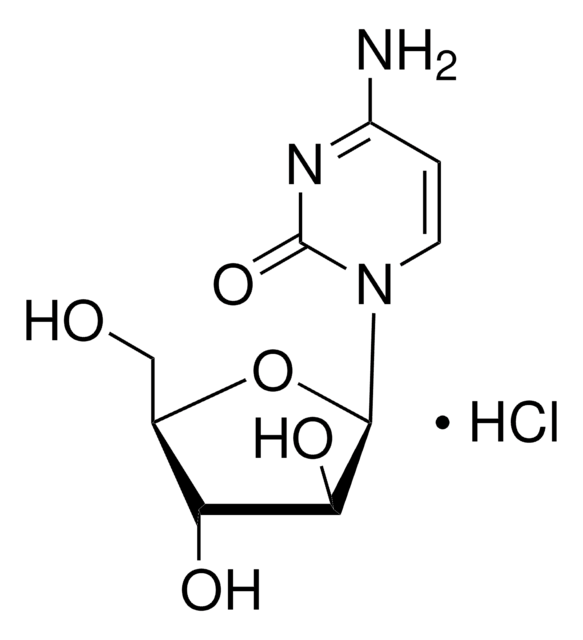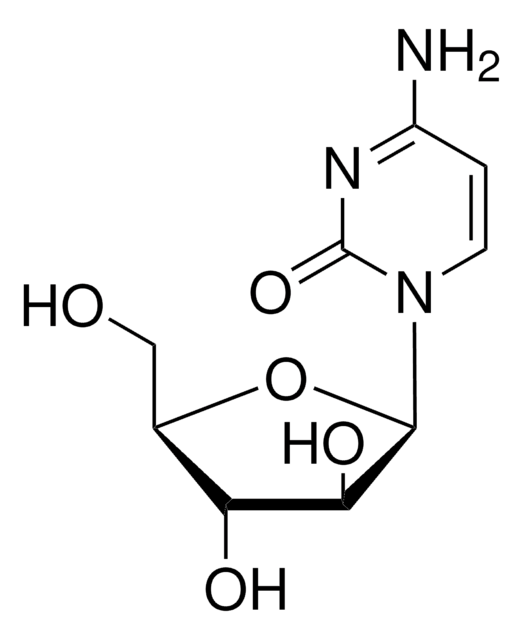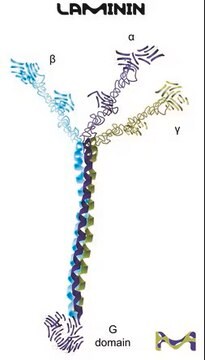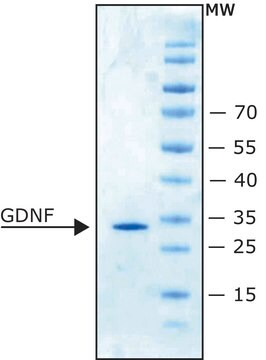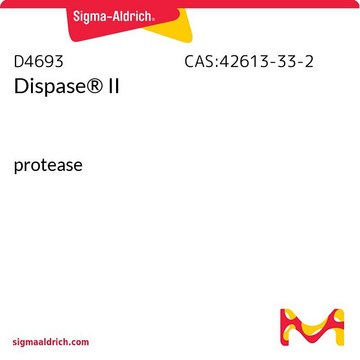Alle Fotos(1)
Wichtige Dokumente
G1401
Glial Cell Line-derived Neurotrophic Factor from rat
recombinant, expressed in baculovirus infected Sf21 cells, lyophilized powder, suitable for cell culture, ≥97% (SDS-PAGE)
Synonym(e):
ATF, Astrocyte-derived trophic factor, GDNF
Anmeldenzur Ansicht organisationsspezifischer und vertraglich vereinbarter Preise
Alle Fotos(1)
About This Item
Empfohlene Produkte
Biologische Quelle
rat
Qualitätsniveau
Rekombinant
expressed in baculovirus infected Sf21 cells
Assay
≥97% (SDS-PAGE)
Form
lyophilized powder
Wirksamkeit
0.10-10 ng/mL
Mol-Gew.
~30 kDa
Verpackung
pkg of 10 μg
Lagerbedingungen
avoid repeated freeze/thaw cycles
Methode(n)
cell culture | mammalian: suitable
Verunreinigungen
endotoxin, tested
UniProt-Hinterlegungsnummer
Lagertemp.
−20°C
Angaben zum Gen
rat ... Gdnf(25453)
Biochem./physiol. Wirkung
Glial cell-derived neurotrophic factor (GDNF) is a neurotrophic factor that is a member of the TGF-β superfamily. GDNF is founding member of the GDNF family of ligands, which to date include GDNF, neurturin (NTN), persephin (PSP) and artemin (ART). GDNF is a glycosylated disulfide-linked homodimeric protein of ~15 kDa. Mature rat and human GDNF share 93% sequence homology with strong species cross-reactivity. GDNF promotes survival of various neuronal cells in central and peripheral nervous systems and different stages of development including motoneurons, midbrain dopaminergic neurons, Purkinje cells, and sympathetic neurons. Cells known to express GDNF include Sertoli cells, type 1 astrocytes, Schwann cells, neurons, pinealocytes, and skeletal muscle cells. In addition, exogenously applied GDNF has been shown to rescue damaged facial motor neurons in vivo.
Physikalische Form
Lyophilized from 50 μL of a 0.2 um filtered solution in PBS, pH 7.4 with 50 ug BSA per 1 ug as a carrier protein
Hinweis zur Analyse
The biological activity of GDNF is measured by its ability to bind to immobilized rrGFRa1/Fc in a functional ELISA.
Lagerklassenschlüssel
11 - Combustible Solids
WGK
WGK 3
Flammpunkt (°F)
Not applicable
Flammpunkt (°C)
Not applicable
Persönliche Schutzausrüstung
Eyeshields, Gloves, type N95 (US)
Hier finden Sie alle aktuellen Versionen:
Besitzen Sie dieses Produkt bereits?
In der Dokumentenbibliothek finden Sie die Dokumentation zu den Produkten, die Sie kürzlich erworben haben.
Kunden haben sich ebenfalls angesehen
Roche C de Guzman et al.
Journal of microencapsulation, 25(7), 487-498 (2009-02-25)
Controlled expression of glial cell line derived neurotrophic factor (Gdnf) can be integrated in the development of a system for repair of injured peripheral nerves. This delivery strategy was demonstrated via inducible Gdnf from microencapsulated cells in barium alginate. The
Weidong Xiao et al.
Molecular neurobiology, 50(2), 274-289 (2014-06-01)
Acute intestinal ischemia reperfusion (IR) injury is often associated with intestinal epithelial barrier (IEB) dysfunction. Enteric glial cells (EGCs) play an essential role in maintaining the integrity of IEB functions. However, the precise mechanism of EGCs under IR stimulation remains
Clive Bate et al.
Molecular neurodegeneration, 3, 1-1 (2008-01-09)
The early stages of Alzheimer's disease (AD) are closely associated with the production of the Abeta1-42 peptide, loss of synapses and gradual cognitive decline. Since some epidemiological studies showed that EGb 761, an extract from the leaves of the Ginkgo
Brian V Lien et al.
Experimental neurology, 314, 46-57 (2019-01-18)
Neural stem cells (NSCs) can differentiate into both neurons and glia after transplantation into spinal cord injury (SCI) sites. The neuronal component of stem cell grafts has the potential to form functional synaptic relays across the lesion site. The glial
Michela Morano et al.
International journal of nanomedicine, 9, 5289-5306 (2014-12-09)
Innovative nerve conduits for peripheral nerve reconstruction are needed in order to specifically support peripheral nerve regeneration (PNR) whenever nerve autotransplantation is not an option. Specific support of PNR could be achieved by neurotrophic factor delivery within the nerve conduits
Unser Team von Wissenschaftlern verfügt über Erfahrung in allen Forschungsbereichen einschließlich Life Science, Materialwissenschaften, chemischer Synthese, Chromatographie, Analytik und vielen mehr..
Setzen Sie sich mit dem technischen Dienst in Verbindung.